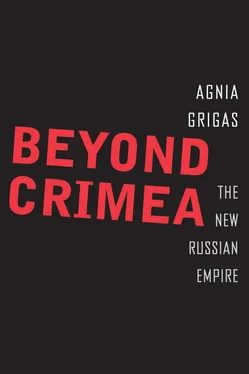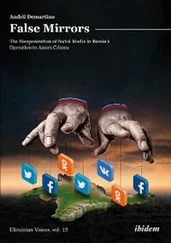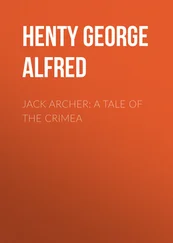6. “compatriot (eng. Compatriot)— compatriote, from lat. cum —with and patria —homeland (or fatherland), sootechestvennik .” Aleksandr Prokhorov, ed., Bolshaya sovetskaya entsiklopediya , 3d ed., vol. 12 (Moscow: Sovetskaya entsiklopediya, 1973).
7. Boris Vvedenskiy, ed., Bolshaya sovetskaya entsiklopediya , 2d ed., vol. 32 (Moscow: Gosudarstvennoye nauchnoye izdatelstvo “Bolshaya sovetskaya entsiklopediya,” 1955), p. 236.
8. Joseph Stalin, Victory Speech, 9 May 1945, https://www.marxists.org/reference/archive/stalin/works/1945/05/09v.htm.
9. Szabolcs Pogonyi, Mária M. Kovács, and Zsolt Körtvélyesi, “The Politics of External Kin-State Citizenship in East Central Europe,” EUDO Citizenship Observatory , October 2014, http://eudo-citizenship.eu/docs/ECEcompreport.pdf.
10. Myra A. Waterbury, “Making Citizens Beyond the Borders: Nonresident Ethnic Citizenship in Post-Communist Europe,” Problems of Post-Communism 61, no. 4 (2014): 36–49.
11. Sarah Ansari, “Subjects or Citizens? India, Pakistan and the 1948 British Nationality Act,” Journal of Imperial and Commonwealth History 41, no. 2 (2013): 285–312.
12. For review of Russian compatriot policies in the 1990s see Igor Zevelev, Russia and Its New Diasporas (Herndon: United States Institute of Peace, 2001).
13. Joseph S. Nye Jr., Soft Power: The Means to Success in World Politics (New York: Public Affairs Books, 2004), pp. 6–8, 11–15.
14. Andy Byford examines how Russia employs compatriots in international relations, focusing on the case of Russians in Britain. Andy Byford, “The Russian Diaspora in International Relations: ‘Compatriots’ in Britain,” Europe-Asia Studies 64, no. 4 (2012): 715–35. Oxana Shevel notes that the term “compatriot” serves various Russian political ambitions: “Russian Nation-building,” pp. 179–202. Passportization was analyzed in Florian Mühlfried, “Citizenship at War: Passports and Nationality in the 2008 Russian-Georgian Conflict,” Anthropology Today 26, no. 2 (2010): 8–13.
15. Maria Nozhenko analyzes compatriot policies as a tool for helping solve the demographic problem: “Motherland Is Calling You! Motives Behind and Prospects for the New Russian Policy on Compatriots Abroad,” Lithuanian Foreign Policy Review 2, no. 18 (2006): 83–99. Tatyana Kiilo and Yelena Vladimirova acknowledge that Russian compatriot policy serves various interests and goals, but not territorial ambitions: “Russia’s Policy Toward Compatriots,” in Russian Federation 2011: Short-term Prognosis , ed. Karmo Tüür (Tartu: Tartu University Press, 2011), p. 183. Iskra Kirova sees Russian passportization policy as a public diplomacy and soft power tool: “Public Diplomacy and Conflict Resolution: Russia, Georgia and the EU in Abkhazia and South Ossetia,” CPD Perspectives on Public Diplomacy, Paper 7 (Los Angeles: Figueroa Press, 2012). Case studies of compatriot policy in Estonia also focus on its soft power elements. See Heather A. Conley and Theodore P. Gerber, “Russian Soft Power in the 21st Century. An Examination of Russian Compatriot Policy in Estonia,” A Report of the CSIS Europe Program (New York: Center for Strategic and International Studies, 2011).
16. On compatriot policy as humanitarian dimension of Russia’s foreign policy see Gatis Pelnēns, ed., The “Humanitarian Dimension” of Russian Foreign Policy Toward Georgia, Moldova, Ukraine, and the Baltic States (Riga: Centre for East European Policy Studies, 2009); James Sherr, Hard Diplomacy and Soft Coercion (London: Royal Institute of International Affairs, 2013).
17. My view contrasts with that of Charles E. Ziegler, who concludes that in Russia traditional political and security considerations prevail for now: “The Russian Diaspora in Central Asia: Russian Compatriots and Moscow’s Foreign Policy,” Demokratizatsiya 14, no. 1 (2006): 103–26.
18. Simon Sebag Montefiore, Young Stalin (New York: Knopf, 2007), p. 42.
19. Timothy Snyder, Bloodlands (New York: Basic Books, 2010), p. 11.
20. Ronald Grigor Suny and Terry Martin, A State of Nations (New York: Oxford University Press, 2001), p. 12.
21. Amy Knight, “The Political Police and the National Question in the Soviet Union,” in The Post-Soviet Nations , ed. Alexander J. Motyl (New York: Columbia University Press, 1992), p. 171.
22. Snyder, Bloodlands , p. 89.
23. Ibid, p. 329.
24. Ibid, p. 330.
25. The nine nationalities included Poles, Germans, Finns, Estonians, Latvians, Koreans, Chinese, Kurds, and Iranians. See Terry Martin, “The Origins of Soviet Ethnic Cleansing,” Journal of Modern History 70, no. 4 (1998): 813–61, p. 815; Philip Boobbyer, The Stalin Era (London: Routledge, 2001), p. 130.
26. Steven Rosefielde, Red Holocaust (London: Routledge, 2010), p. 80.
27. Robert Conquest, The Harvest of Sorrow: Soviet Collectivization and the Terror-Famine (New York: Oxford University Press, 1986), p. 306; Rafał Lemkin cited in Snyder, Bloodlands , p. 53.
28. Pavel Polian, Against Their Will: The History and Geography of Forced Migrations in the USSR (Budapest: Central European University Press, 2004), p. 44.
29. Ibid, p. 152.
30. Around 23 percent of immigrants to Baltic States between 1980 and 1988 were released convicts, prohibited from returning to many cities of the Russian Federation. Melvin, Russians Beyond Russia , p. 30.
31. Timothy Heleniak, “Latvia Looks West, But Legacy of Soviets Remains,” Migration Policy Institute , 1 February 2006, http://www.migrationpolicy.org/article/latvia-looks-west-legacy-soviets-remains; Estonia.eu, Population by nationality, http://estonia.eu/about-estonia/country/population-by-nationality.html.
32. Lietuvos Statistika (Statistics Lithuania), 2014, http://osp.stat.gov.lt/en/home.
33. Vera Tolz, Russia (New York: Oxford University Press, 2001), pp. 235–60.
34. For “Rossiisification” versus Russification see Ammon Cheskin, “Russia’s Compatriot Policy: The Consolidation and “Rossiisification” of Russian Speakers Abroad,” draft chapter, https://www.academia.edu/9517418/Russia_s_compatriot_policy_The_consolidation_and_Rossiisification_of_Russian_speakers_abroad. According to Ziegler, the term Russkii refers to an ethnic Russian; the term Rossiane refers to all citizens of the Russian Federation, and the term “compatriots” to culturally Russified persons and those generally regarded as ethnic Russians living in the former Soviet Union. See Ziegler, “The Russian Diaspora in Central Asia,” p. 107.
35. Cited in Melvin, Russians Beyond Russia , p. 18.
36. Tolz, Russia , p. 254.
37. Franklyn Griffiths, “From Positions of Weakness: Foreign Policy of the New Russia,” International Journal 49 (1994) 699, cited in Simonsen, “Compatriot Games,” p. 772.
38. In November 1992 Yeltsin issued a decree “On the Protection of the Rights and Interests of Russian Citizens Outside the Russian Federation.” Charles King, Extreme Politics: Nationalism, Violence, and the End of Eastern Europe (New York: Oxford University Press, 2010), p. 140. See Nozhenko, “Motherland Is Calling You!” p. 7.
39. Simonsen, “Compatriot Games,” p. 772.
40. Ibid.
41. Cited in Simonsen, “Compatriot Games,” p. 775.
42. “Yeltsin Asks U.N. to Help Russians in the Baltics,” New York Times , 8 November 1992, http://www.nytimes.com/1992/11/08/world/yeltsin-asks-un-to-help-russians-in-the-baltics.html, cited in Simonsen, “Compatriot Games,” p. 775.
Читать дальше












